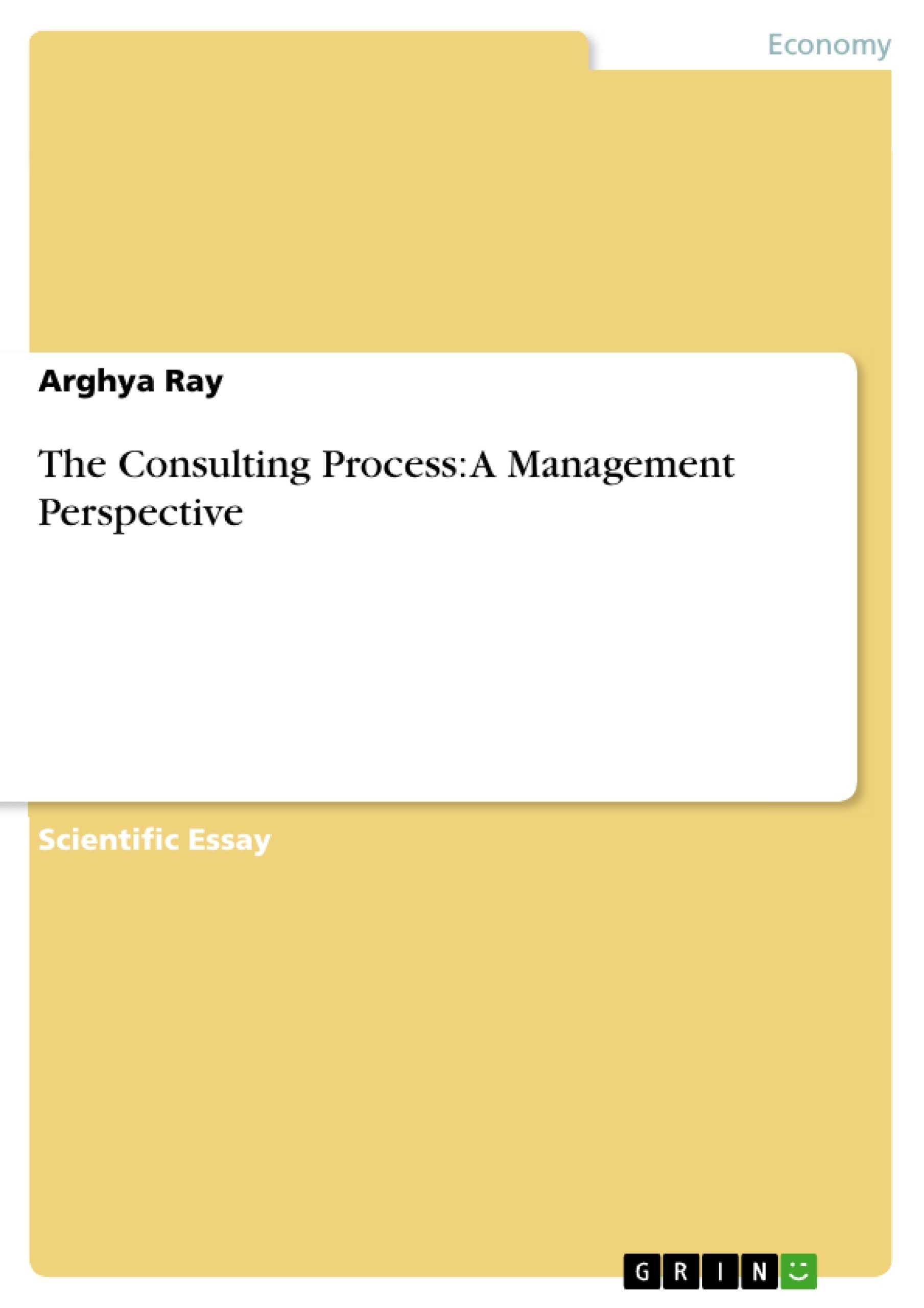The paper gives a brief description of consulting process or consultancy process from the management perspective. It focuses on the seven divisions of the process and concisely describes each division. Works of reputed authors have been consulted and researched.
The Consulting Process: A Management Perspective
Introduction
Consulting or consultancy services are becoming more important and thought provoking everyday. The need of consulting is increasing all over the business world. From the viewpoint of management, consultancy or consulting process can be defined or explained in such a way that it would help the other spheres of human activities too like education, health care, engineering, etc. Consulting has nowadays become one of the core areas of management studies.
This paper is aimed at providing the reader with a consulting process framework. The framework is standard and to some extent rather universal. Scholars all over the world have divided consultancy process broadly into seven phases and these phases are discussed in the paper. The discussion is concise, since the main points have been roughly summarized. The paper ends at a suitable conclusion.
The Consulting Process
Consulting is basically all about assisting another organization, group, team or individual to transform business from one state to another. The consulting process also involves assisting in such transformations predefined by the management or the individual concerned. Thus, consultancy fundamentally concerns transition between diverse states (Sturdy, 1997).
An elaborate explanation of consulting process (or consultancy process) divides it into seven phases.
Phase 1
This is the phase of entering the organization. It is the first contact interface between the client and the consultant. It includes the discussions to start the piece of consultancy. The client and the consultant are helped to know each other through face to face meetings. The consultant decides preliminarily that how he/she could help in problem solving and crisis intervention at this phase (Shapiro et al, 1993).
Phase 2
This is the stage of preliminary diagnosis. The focus of the client should be shifted towards analyzing the problem and the purpose. Cooperation between the client and the consultant blooms at this stage. The consultant has to find out the performance patterns of the organization and an assessment of the requirements and resources related to the business transformation should be carried out (Tisak and Smith, 1994). Data collection is a primary task at this stage since it relates to the quality of the prospective solutions. The payment of the consultant must be cleared at this stage so that delays and other kinds of disputes can be avoided.
Phase 3
Contracting is the third phase of the consulting process. The contract should be designed in a lucid legal cum business language. The problem statement, objectives and aims, list of important players, milestones and declaration of re-negotiation terms are the essential parts of such a contract. (Handy, 1987)
Phase 4
This is the diagnosis phase. This is the phase when deeper examination of the problem has to be carried out. The problem should be fully analyzed, points of consensus and contrasts should be filtered and addressed, assessment of the mentality of the client should be done and ample data should be collected through interview sessions, meetings, etc. (Metzger, 1988). The consultant has to work out his or her way rather like a detective at this stage. A wide range of diagnostic techniques can be applied once the client is fully involved in the process.
Phase 5
This is the reporting phase. In this phase, the client must be called on to give response to the presentation of the problem. Recommendations and data are also reported. Particularly, the recommendations by the consultant must be scrutinized by the client at this stage. Also, the subsequent course of action has to be determined and the questions like how, when and what should be answered the report. (Grint and Case, 1998)
Phase 6
At this stage, implementation has to be done. Through implementation the client and the consultant will examine the feasibility of the proposals put forward by the consultant. These proposals can be adjusted if necessary. Further, shortcomings in the planning can be found out and rectified. Possible resistance to the process of change can be evaluated. The run time scenario of the organization should be completely analyzed to facilitate the implementation of plans and proposals (Clark and Fincham, 2002). Also, staff training programmes are implemented at this stage.
[...]
- Arbeit zitieren
- Arghya Ray (Autor:in), 2011, The Consulting Process: A Management Perspective, München, GRIN Verlag, https://www.grin.com/document/177883
-

-

-

-
Laden Sie Ihre eigenen Arbeiten hoch! Geld verdienen und iPhone X gewinnen. -

-
Laden Sie Ihre eigenen Arbeiten hoch! Geld verdienen und iPhone X gewinnen. -

-
Laden Sie Ihre eigenen Arbeiten hoch! Geld verdienen und iPhone X gewinnen. -

-
Laden Sie Ihre eigenen Arbeiten hoch! Geld verdienen und iPhone X gewinnen.

